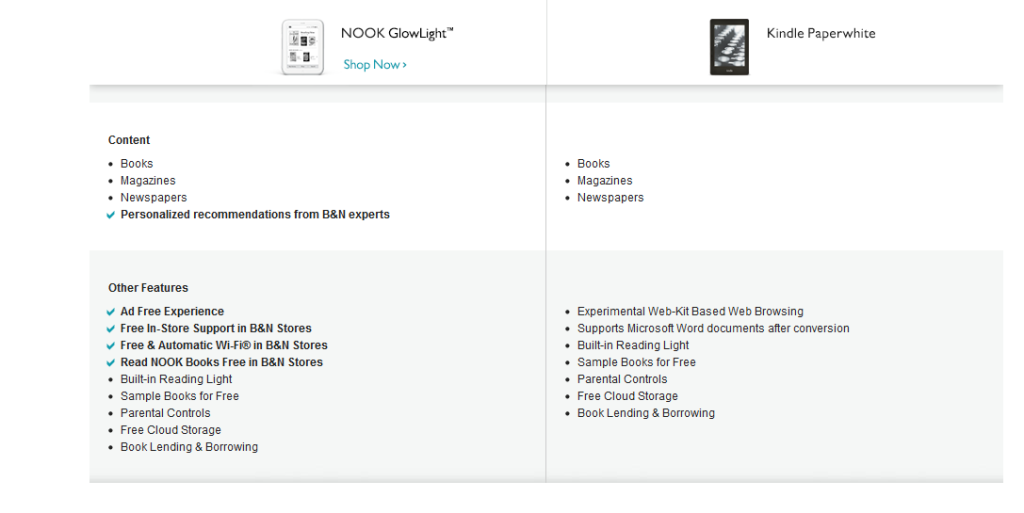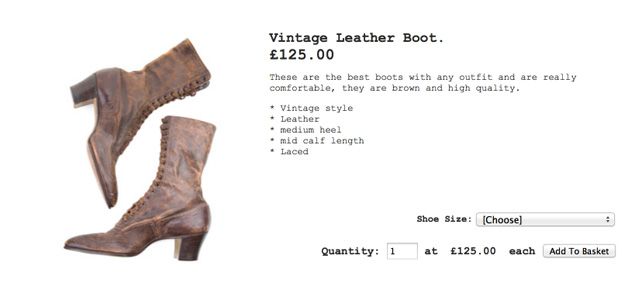7 Things You Are Doing Wrong with Your Product Descriptions
What if I told you that you could easily double your conversions without ever having to worry about doing a single drop of extra SEO or advertising? Mind you, you’d still need to do what you already do. This isn’t magic and won’t bring traffic to a site that nobody knows about but if you implement these ideas, you may well be able to double the number of conversions you get from existing traffic.
In addition, you can easily attract more traffic by making some specific tweaks to your page. Sounds good? Then all you need to do is to make your product descriptions sound like things people actually want to buy instead of being something boring that just offers a plain vanilla explanation of what the product actually is. Here are seven mistakes that you may well be making when writing your product descriptions:
Failing to Think about Who Your Buyers Are
So you’ve got a product, let’s say it’s a new kind of pocket book which can be biometrically sealed so that it becomes worthless to purse snatchers. I’m just throwing out an idea which is likely a bad one (I mean, once the purse snatcher has the thing, they have all the time in the world to get around any locking mechanism but work with me on this anyway).
Okay, now you have a problem. Who exactly is your customer for this product? If you’re like many entrepreneurs I’ve seen on the web, you probably are super excited about whatever it is that you have for sale and you think it’s the greatest invention since sliced bread or maybe even since the iPod. You can’t imagine why anyone wouldn’t want to own one and you’re sure you’re going to make a bundle of money.
Reality check time. You need to create a “buyer persona.” Think of every crime show that you’ve ever seen (well almost every one that you’ve ever seen) and you’ll know what this is. Crime shows often have people who create a profile of a likely suspect in an investigation.
A buyer persona is no different except that instead of creating a profile of someone who committed the murder of the week, you are creating a profile of the buyer of the week (i.e. a profile of someone who is likely to want to buy your product).
Okay, I know what you’re thinking: you know who you want to sell your product to – going back to our imaginary purse snatcher proof purse, your target market is super geeky women who are afraid for their personal safety (again, this is probably a bad product idea). However, if that’s all you have to go on, you are no more likely to make money from your customers than the crime solvers are likely to catch a criminal with such a vague description.
Remember those crime shows where the police investigator puts together a very detailed profile and talks about what the person’s childhood might have been like as well as whether the person lives alone or not, even sometimes going so far as to say what kind of clothing they likely wear? That’s what you need to do for your buyer persona.
In essence, it’s almost like writing a novel to create a buyer persona. Your persona needs to have all the attributes of a real person with thoughts and feelings beyond some vague interest in your product. When you have all these details down, you can then use that to craft your product descriptions to fit perfectly with the kind of person who would buy your product.
Writing Your List of Product Features Incorrectly
I see this constantly and it’s a crying shame because this happens to lots of great products. Yes, we all know that you are very excited about this new product that you worked so hard to create. We all know that you love all the esoteric features that you’ve added into your new product and you think that this feature is so cool.
Sorry to tell you but nobody cares even a little bit about what you think is cool or wonderful or whatever. When it comes to your customers, you have to remember that they are going to be the ultimate narcissists. They don’t care what it took to make this thing or about a dry list of features. They want to know what it will do for them.
In other words, as I say over and over again every time that I write about marketing on the Internet, you are in the solution business. Your job is to sell your customers a solution to their problems and to make sure that it makes their lives easier.
Effectively, this means that if you were to mention that your new word processor has an intuitive, real time spell check, you have just wasted your time and your customer’s time. On the other hand, if you were to say that the spell check uses AI to try to determine which word was intended and automatically suggest a correction, you have now provided your customers with a useful solution instead of something that you think is cool.
You should also be providing a list of benefits that your customers will get with your product as opposed to what they get with the competition. This means for example that you might compare the speed of your word processor’s spell check with the speed of the competition’s spell check. Or maybe the accuracy can be compared. Bottom line is to ensure that you are feeding your customer’s narcissism rather than your own and you will be fine.
Not Bothering to Think about Your Company’s Image
Another thing that many people do when they’re trying to write a product description is to forget that there are different kinds of companies out there which appeal to different kinds of customers. Some customers are going to want to buy a product from a company that sounds large and well established while others would prefer to work with a company which has a smaller profile and where they feel they can get personalized service.
Remember that buyer persona we created? Here’s where it can come in super handy. Your customer may be the kind of person who is going to prefer to have a personal relationship with the people that they make a purchase from. This would mean that they’re the kind of person who wants to see a description which sounds a little quirky and which makes them feel as if they’ve found a real individual to work with.
In other cases, you may have a customer who would prefer to work with a big corporation because that would make them feel safer about their personal information or other needs being taken care of. In this case, your product description needs to reflect the fact that your company is big and well established (even it’s just you and your dog in your spare bedroom).
The way that you accomplish this is to basically create a product description which trumpets the complexity of the various features that your product has and which makes it sound like you have a product which is well polished and established as opposed to one where you sound quirky and individualistic.
Again, that buyer persona is all important here because without it, you wouldn’t really know what will appeal to your potential customers so make sure you have it before you even begin.
Failure to Create Subheadings or Lists
As I said in a previous article here, people don’t really like to read every single word that you post on the Internet. In fact, the vast majority of people will read just a tiny fraction of whatever it is that you post in your product descriptions (not that you can slack off though since those most interested will read every word and will notice if your specifics don’t look so interesting).
Thus, in order to ensure that you can reach the widest possible audience, you want to ensure that you keep things in bullet points but also include either a link or smaller text below for those who want to know more. This way, you can keep your customers engaged and get more of them hooked on whatever it is that you have for sale. Here’s a screenshot of the Barnes and Noble Nook eBook reader:

Did you notice how they didn’t focus in this comparison on the technical specs (though they do that above, which is probably mostly to make it clear that they’re comparable in every way to the Kindle)? Instead, this list shows the benefits that each one will give you and makes it easy to figure out why the narcissistic customer (again, when it comes to your customers, assume they are narcissists in this instance) should want it.
There are also links on the same page where customers can learn more about the various features of the Nook so that those who want to know the nitty gritty of the details can find out exactly how each service works and why they should buy a Nook.
Failure to Edit
So you’ve written this amazing product description and you’ve taken into account the buyer persona that you created earlier. You made sure that the list appeals to them and not to you and made sure that the product description is easily scannable. Great – now you’re ready to publish, right? Not so fast my friend.
Nothing is likely to sink your fortunes faster than putting out a very drafty version of your product description. This is not the same as a blog where you may need to push out lots of content constantly. Your product description is going to be pretty static and will be the primary selling point for your product. This means it needs to be polished and refined.
Ideally, give yourself a day or two to forget exactly what you wrote and then come back to read it again. Another great trick is to read it out loud. Somehow, when you read out loud, you tend to notice mistakes and things that just don’t sound quite right which you would never have noticed had you simply read it silently to yourself.
If you can, get some feedback from random people (ideally, not your friends or family, who will want to please you. In fact, an editor is best) who can critique what you wrote and tell you why (or why not) it works. This will help you to tweak the product description so that it can get the maximum number of possible sales for you.
Be Persuasive
A while back, I wrote about one of my favorite books, How to Win Friends and Influence People by Dale Carnegie. The book, along with a companion, How to Stop Worrying and Start Living, has really changed my life. In both books, Carnegie mentions this idea (though not in so many words) that people tend to be narcissistic at their cores.
Mind you, being a narcissist in all things is a bad thing and nothing to be proud of (by the way, just in case anyone doesn’t know what it means, it means someone who is very self centered. It comes from the Greek legend of Narcissus. You can look it up elsewhere but it’s basically a cautionary tale about not being too self centered).
That having been said, human nature, especially when making a purchase is to ask, what’s in it for me? How do I benefit personally from this. This means that in order to make your writing persuasive, it should have a number of personal pronouns (I, You, etc.). These tend to make the writing all about your customer and less about your own interests.
Be specific as well rather than generalizing in describing the features that your product includes. So for example, instead of saying it has a great spell checker, explain that it’s got an intelligent AI which can automatically suggest appropriate words based on context.
Finally, always think about what your customer wants and not what you want and you will find that your writing is more persuasive for your trouble.
Don’t Forget about Google
Finally, while it’s important to write your product descriptions in a way that makes sense for humans, it would be foolhardy to complete ignore the SEO aspect of writing product descriptions. This means that you need to be clever about working in your keywords so that Google and the other search engines will pick up on what you wrote and present it as a relevant option for your customers.
The other side of that of course is that just like every other part of your website, your product descriptions should have ample high quality backlinks pointing at them so that you can ensure that you get the maximum possible benefit from the Google gods.



